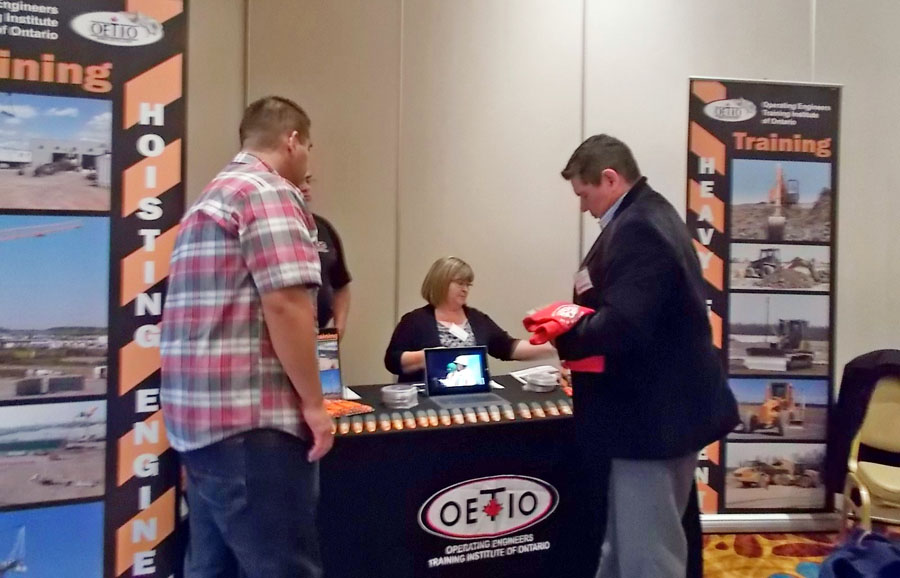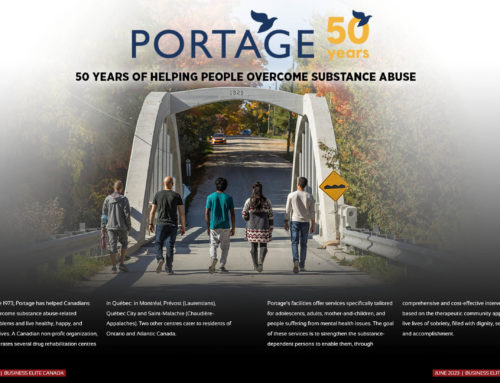Strong Partnerships take spotlight at annual AABO Conference
By Cheryl Long
In November 2015, the Aboriginal Apprenticeship Board of Ontario (AABO) held its fifth annual conference in Niagara Falls, Ontario, which brought together a cross-section of groups working together to increase the number of aboriginal people employed in skilled trades in Ontario.
Last year’s two-day event, organized by AABO executive director Sara Monture,kicked off with a traditional opening by Jock Hill, Faithkeeper and Sub-Chief, Cayuga Nation, Bear Clan, and then moved into a series of keynote speeches, networking sessions, discussion groups, presentations and vendor displays designed to help foster partnerships that promote employment for Ontario’s aboriginal people.
AABO is working to connect training organizations, aboriginal employment groups and the province’s construction industry, linking the aboriginal labour supply with an ongoing demand for skilled tradespeople. Among AABO’s key partners are the Ontario-based Aboriginal Skills and Employment Training Strategy Agreement (ASETA) holders, who work with aboriginal clients to prepare them for employment and provide employers with a “ready-to-work” labour force. ASETA holders are spread out across Ontario, from the province’s northern communities to the Greater Toronto Area to the southwestern region, and serve clients of First Nations, Métis and Inuit heritage.
Aboriginal communities want to build true partnerships with companies, particularly those that are developing infrastructure close to their communities. In many cases, businesses want to employ First Nations tradespeople but don’t know how to take that step, said Ed Gilbert, Energy Consultant with the Giiwedin Noodin First Nation Energy Corporation. The corporation was formed to manage the concerns of the First Nations side of the Grand Bend Wind Farm located near the eastern shore of Lake Huron. Continuing to build relationships between economic development, employment and training is the path to success.
Matt Jamieson, President/CEO at Six Nations of Grand River Development Corporation, talked about a successful joint venture with Aecon that will see a broad range of utilities-related work in southwestern Ontario. Six Nations represents the largest population of all First Nations people in Canada, who will make up 100 percent of the people employed in the project. Aecon is a Canadian leader in construction and infrastructure development, and the project represents true success in a partnership between First Nations and corporate Canada, Jamieson said.
Keith Hamilton, CEO, Rainy River First Nation Economic Development Corporation, talked about the “wooden Indian concept” where aboriginal communities would accept funds from corporations to carry out work in and near their communities but would never be considered true partners in the project. That’s not the type of relationship that First Nations people want, Hamilton said, and instead are working to build partnerships with industry that bring profits and employment back to their communities.
Encouraging aboriginal people to learn a skilled trade and enrol in an apprenticeship is key to fostering personal success and helping to build successful, self-sustaining communities. But there are several barriers that can make it difficult for those involved to “break the welfare cycle”, and that’s something that groups like AABO and ASETA holders are hoping to change.
- Economics: Just finding the money needed to purchase books and equipment, rent living space and pay for travel to a school or work site can be daunting.
- Education prerequisites: For some, enrolling in a skilled trades program could require educational upgrades or additional preparatory courses.
- Culture: Aboriginal communities can be very tightly-knit, and leaving the support and familiarity is often difficult. Returning to the community after being away for an extended period of time can also be challenging. Educators and employers may also have to consider the special ties that aboriginal people have within their communities; in times of crisis, leaving school or work to return home is a situation that could need special accommodation.
Indspire is one group that is targeting the youngest group of prospective students, beginning in kindergarten through Grade 12. The Indigenous-led not-for-profit organization invests in the education of aboriginal people for long-term benefit, working with students in remote communities and urban centres across Canada. Financial challenges are the No. 1 barrier to post-secondary education and to date, Indspire has awarded $79 million through bursaries and scholarships to students.
They currently have about 35 community-led projects underway designed to enhance the educational outcome of students as they work towards secondary school graduation. Among their innovative resources is the K-12 Indspire Institute, which is a virtual resource centre that connects educators working with Indigenous students with the programs, information and tools they need to increase high school completion rates.
Last fall, Indspire announced a new partnership with Rio Tinto, a global leader in mining and processing essential metals and minerals. The company will provide
$1 million over four years to Indspire’s Building Brighter Futures: Bursaries, Scholarships, and Awards program.






